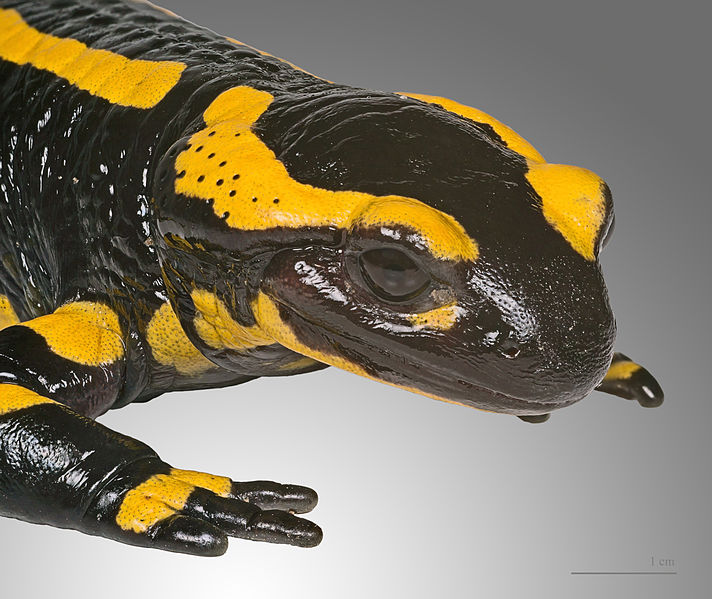We're open daily! View holiday hours
Science News
New Chytrid
September 10, 2013
by Molly Michelson

When researchers found fire salamanders (Salamandra salamandra) in the Netherlands dying at a rapid rate from a skin fungus, they thought the infection looked familiar.
Globally, amphibian numbers are declining in large part due to a chytrid fungus known as Batrachochytrium dendrobatidis or Bd. Bd attacks the skin of its host causing “the outer layers of the epidermis to thicken,” says the Academy’s amphibian expert, Dave Blackburn. “Bd disrupts the function of amphibian’s skin by interfering with electrolyte transport.”
Bd is quick and deadly: its effects may have wiped out more than 200 species of amphibians worldwide.
Similarly, the fire salamanders are dying at a rapid rate. Since first seeing dead animals in the Netherlands in 2010, scientists have observed that the population has fallen to around 10 individuals, less than four per cent of the original numbers.
But the similarities end there. The infected fire salamanders display skin lesions or ulcers and when the animals were tested, they were negative for Bd.
So what gives? According to a paper published last week in the Proceedings of the National Academy of Sciences, a new chytrid fungus.
Batrachochytrium salamandrivorans or Bs is closely related to Bd, but an entirely new chytrid fungus species.
This study is incredibly important, Blackburn says. “It clearly shows three things: 1) Bs is a new species of chytrid, 2) it presents different pathology than Bd (these lesions), and 3) it may have different host specificity.”
Bs, like Bd, doesn’t kill every amphibian it meets. “Midwife toads, Alytes obstetricans, are among the most susceptible of European frogs to Bd,” Blackburn says. But the study researchers infected the toads with new fungus Bs, and they were not susceptible to that fungus.
But the evidence the study provides only brings more questions for Blackburn. “When we think some amphibians around the world were killed by Bd, could it have been something else? Bs? Yet another species of chytrid?”
He gives an example of the thermal range for Bs and Bd. “People trying to predict how Bd spreads and where it would thrive—the fungus may be absent from that location now, but where it might flourish given the right conditions—by modeling where the disease is now with information on climatic conditions. In the past, have we been looking at the thermal range for Bd only or might we have confused some records of Bd with what we now know as Bs? Each may have different thermal conditions and there could be errors to where we’ve predicted that the disease could thrive.”
Testing for the new chytrid fungus also presents a conundrum. Although tests have been developed to screen for Bd, it is not clear whether these might sometimes be detecting Bs instead. The authors of the new study have developed primers to test for Bs, and Blackburn and his lab will obtain these to test animals here at the Academy.
Blackburn and other scientists came back with live frogs from Cameroon earlier this summer. The team hopes to raise and breed the animals here, displaying them for the public. As we reported in a story a few weeks ago, the frogs are part of a new initiative at the Academy focused on amphibian conservation and biodiversity education.
The Cameroonian frogs were screened and tested positive for Bd. They are being treated with a proven microbial solution, but now Blackburn is worried about Bs. “How widespread is Bs?”
And Blackburn has more and more questions… “Does it only affect salamanders? We’ve seen salamander declines in Central America—it looks like Bd, but could it be Bs? We found skin lesions on amphibians in Cameroon with mortality events, Bd was not present when tested. Could we have found Bs, instead?
“How is it spread, is it totally different from Bd? Why are we seeing these now? How is climate change affecting the emergence, spread, and change of prevalence? How do you stop them?
“Bs really opens the door for further research,” Blackburn says.
Image: Didier Descouens/Wikipedia